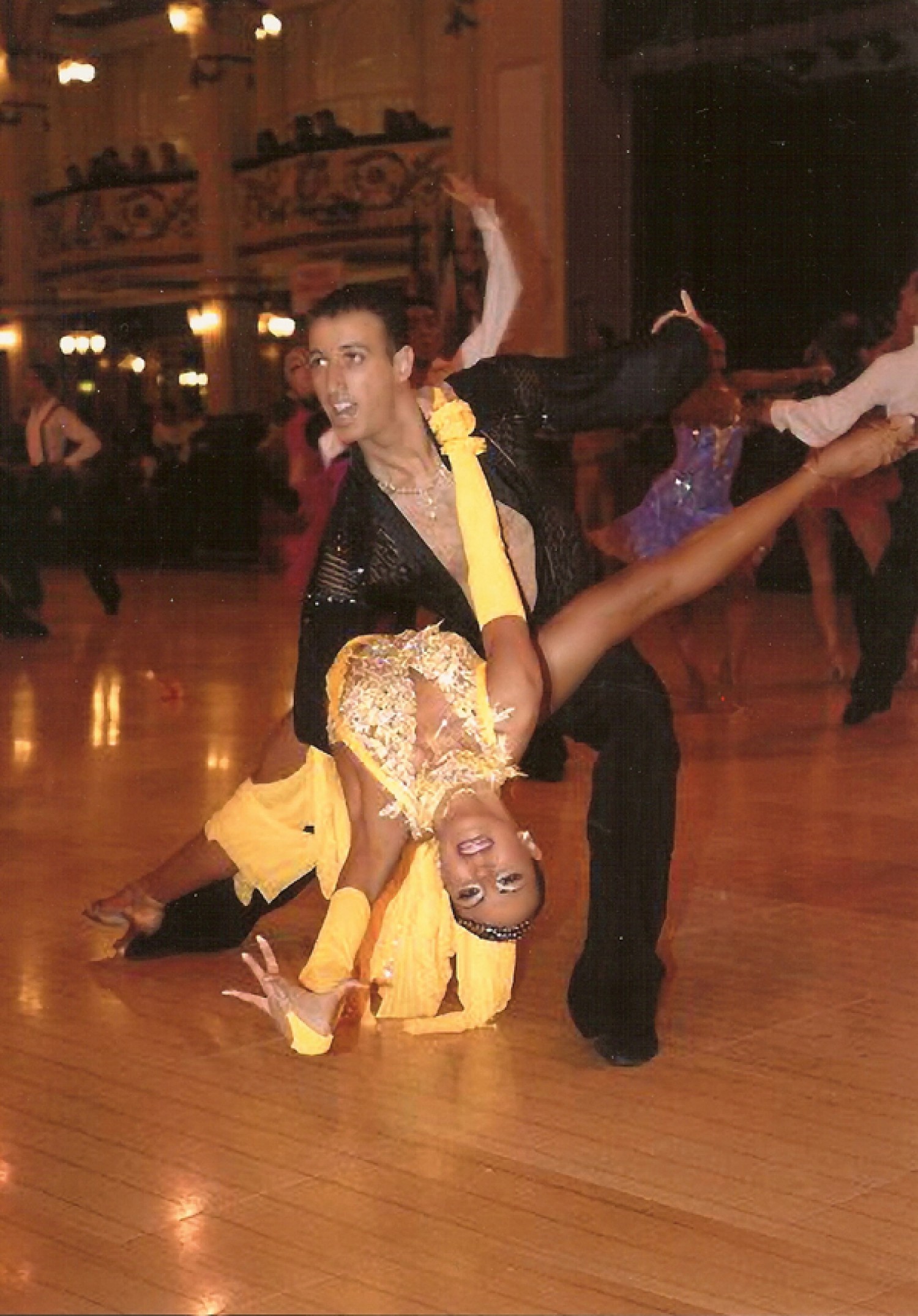Beginner Ballroom Balance, Part Two

Now that we’ve covered the basics of staying balanced, we’re ready to start exploring the ‘little details’ that make all the difference in those upper bronze, silver, and gold figures. Ready to dive in? Let’s go!
Keep it all together
As you develop your dancing, you become aware of the upper and lower halves of your body, and those tenuous layers of stomach muscle that connect the two. More than being the place where movement begins, that 6-pack plays an important role in keeping you upright.
The stronger your core muscles, the more easily you can let your upper body ‘ride’ comfortably on top of your movement without tipping. Fortunately, one of the best ways to strengthen it is to dance more! Preferably with a partner who’s not afraid to tell you you are leaning on him/her.
Mark your territory
Let’s say you’re buying a house. Do you take a quick look through, check the price, and say ‘sounds good’? Of course not – you are going to make sure it’s exactly what you want before you make a commitment. Likewise, we send our foot out in smooth and standard dances – BEFORE we commit our weight.
The movement begins from the core, just enough to feel the direction of movement. Next, we send our leg out to prepare to change our weight, and finally we push off with our standing foot onto the ‘traveling foot’. Change weight too early, and you will ‘fall’ into your step – no bueno.
Turn from the hips
Our core is the centre from which we move. But even more importantly, it is the engine which initiates our turns. Isolating this hip movement is vital to avoid overbalancing on their turns – and it’s there single best thing you can do to improve them.
To spin a coin, you flick the centre of it. If you flicked near the top or the bottom, you would knock it over. Likewise, if we turn by swing our feet or shoulders, we can pull ourselves off balance and not complete the turn.
Isolate those rotational helpers by practicing swivels. Placing two hands on the wall, use your hips to rotate and cross one foot over the other to the left side, then to the right. Not only will you better understand these muscles, you will make them stronger, so they can turn you farther and faster.
With this plethora of skills under your belt, you should have no problem staying upright through any ballroom pattern. Just remember: If you can walk, you can dance, but even walking takes balance.
About the Author
Ian Crewe has been dancing ballroom for over 18 years, and has a Licentiate in American smooth and rhythm. His passion for dance eventually led him to blogging and the World Wide Web. Ian currently teaches at the Joy of Dance Centre, Toronto, ON, Canada.

